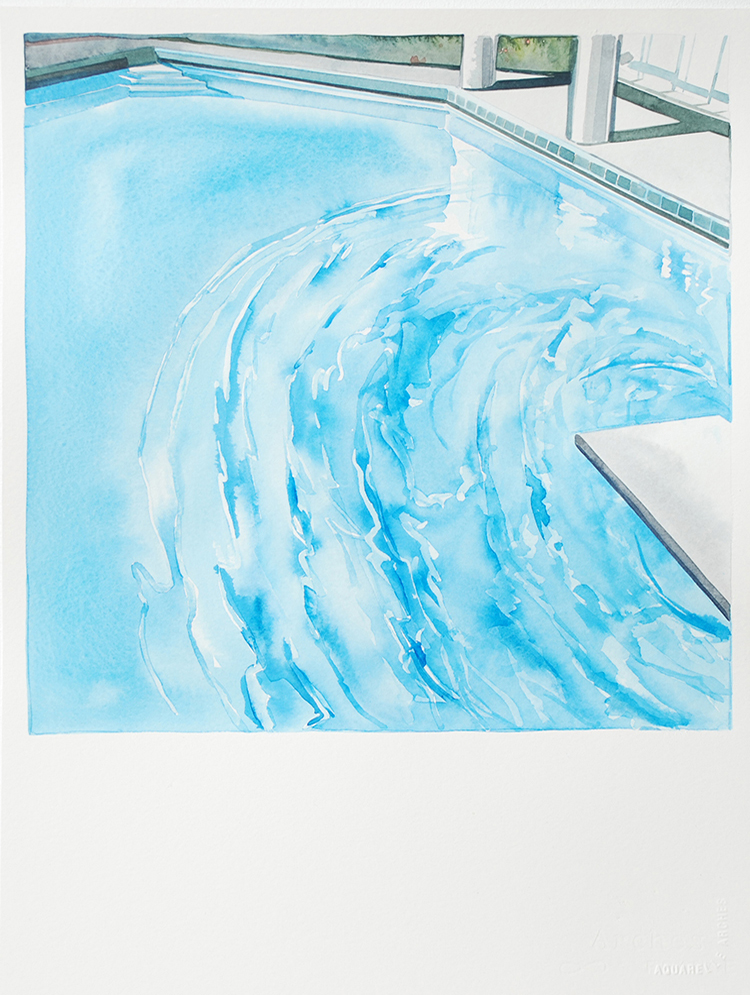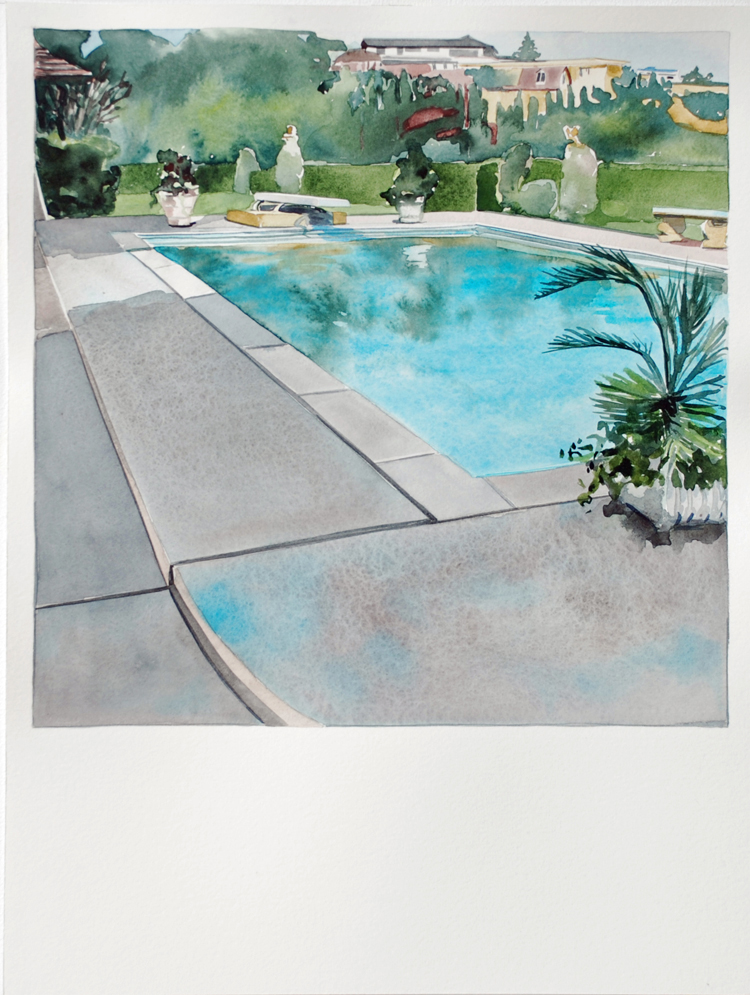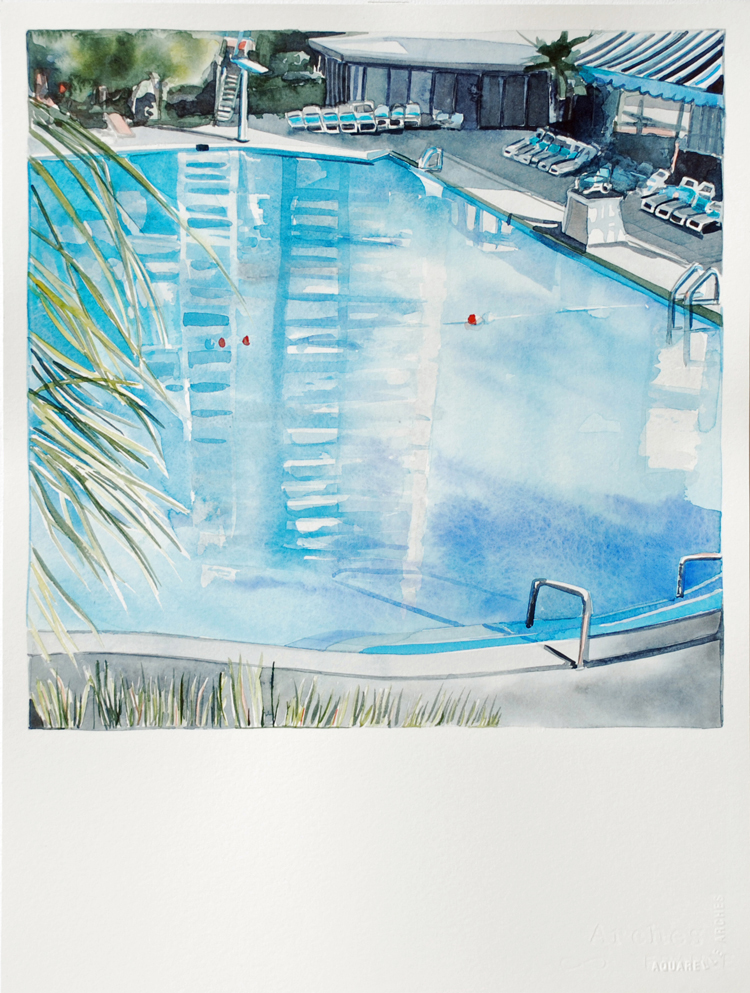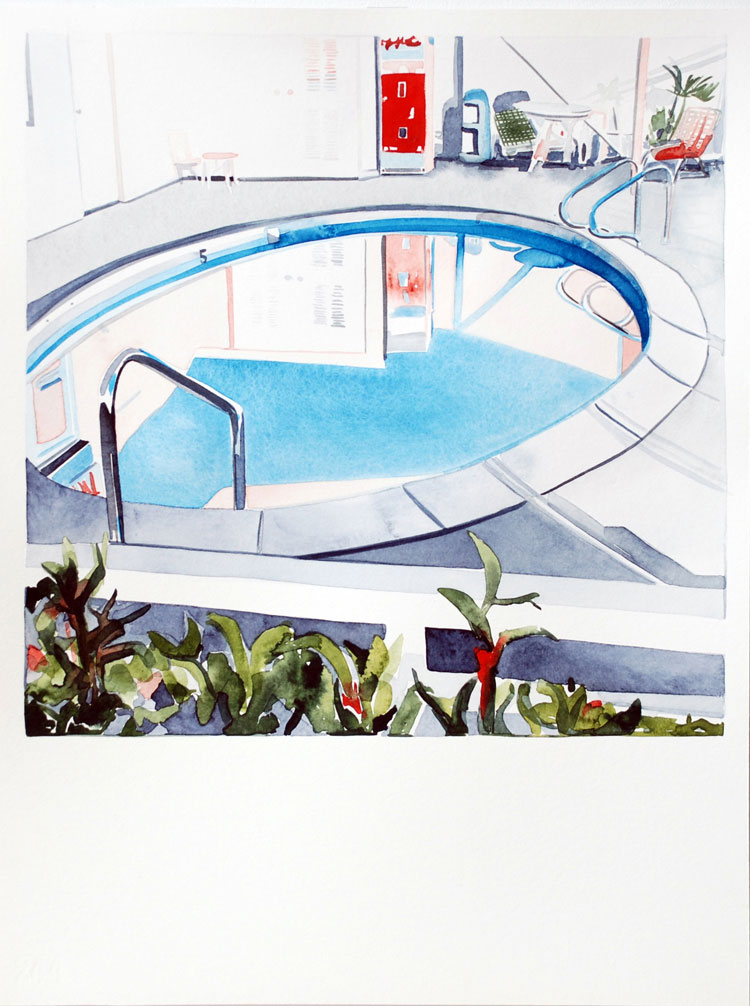“Above all, the photographs I use are not ‘arty’ in any sense of the word,” Ruscha told Artforum in 1965. “I think photography is dead as a fine art; its only place is in the commercial world, for technical or information purposes… To me, they are nothing more than snapshots.” Seven year later, in 1972, he told The New York Times: “I know that my books are not thought of in the same way as my paintings are…. It doesn’t bother me that much, that they might decompose or not be thought of as ‘objects of art.’”
In her latest exhibit at L.A.’s Kopeikin Gallery, artist Amy Park explores this notion by recreating Ruscha’s book of pools from 1968 — in beautiful large-scale watercolor. She paints the title page, too. “For me,” the New York-based Park explains, “I loved the formal qualities of the photos, the shapes of the water contained in the pools; the imperfect compositions; the color choices Ruscha made within each pool photo and as a set of images; finding some abstraction in it all.” After you take in the exhibit, make sure you check out Ruscha’s original pool photos (online or elsewhere); they both captivate, but the different ways they do — and the different ways your body and mind respond — is thrilling.
Ed Ruscha’s Nine Swimming Pools & A Broken Glass, on view till August 19th, is a followup to Park’s show last year, Every Building on The Sunset Strip, which tackled — you guessed it — Ruscha’s book of the same name.
More to explore in Culture
-
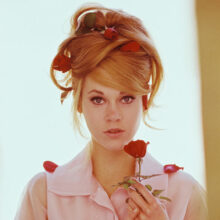 Culture
11.22.23
What’s Your Sign? Sagittarius
Culture
11.22.23
What’s Your Sign? Sagittarius
-
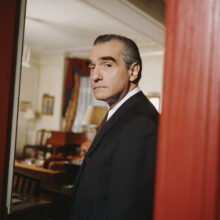 Culture
10.19.23
What’s Your Sign? Scorpio
Culture
10.19.23
What’s Your Sign? Scorpio
-
 Culture
9.19.23
What’s Your Sign? Libra
Culture
9.19.23
What’s Your Sign? Libra
-
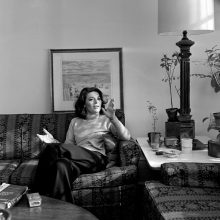 Culture
8.14.23
What’s Your Sign? Virgo
Culture
8.14.23
What’s Your Sign? Virgo
-
 Culture
7.14.23
What’s Your Sign? Leo
Culture
7.14.23
What’s Your Sign? Leo

